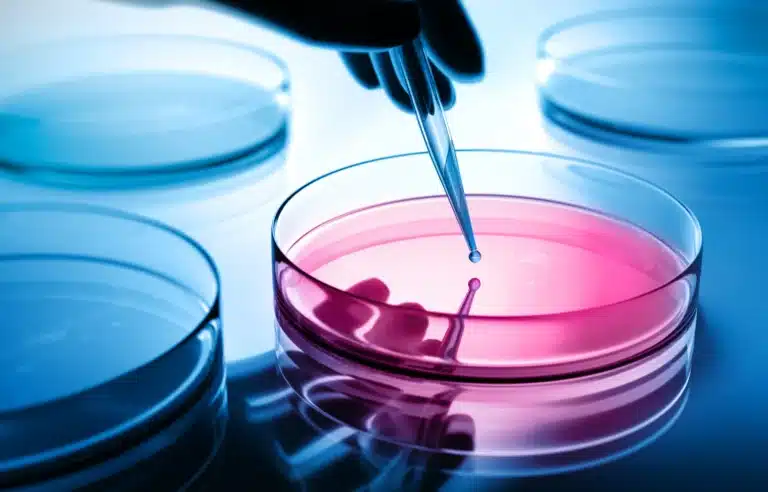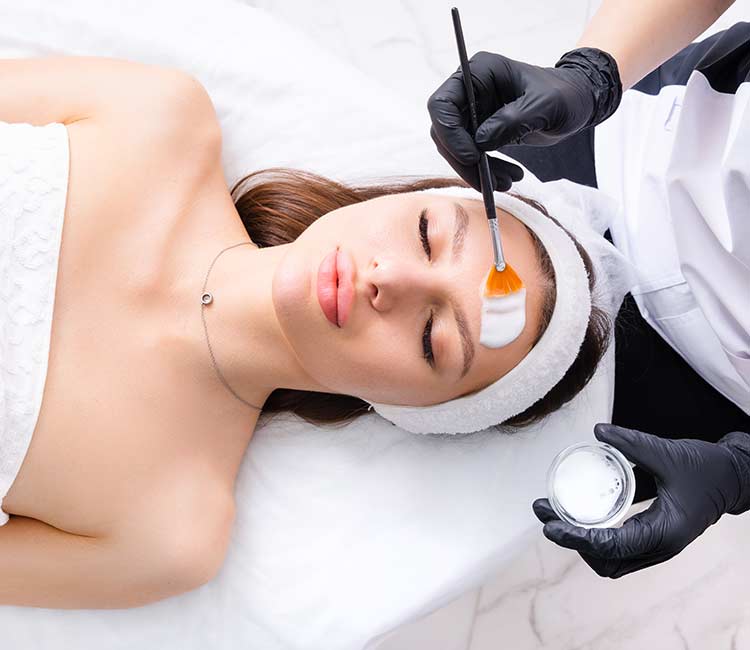L’acné est un problème de peau fréquent qui touche des millions de personnes dans le monde. Que ce soit sous forme de boutons, points noirs, cicatrices d’acné ou inflammations, l’acné peut considérablement altérer la texture de la peau et l’estime de soi. Le peeling chimique pour l’acné est l’une des solutions les plus efficaces pour traiter ces imperfections cutanées. Cette méthode de médecine esthétique aide non seulement à diminuer l’acné active, mais également à réduire les cicatrices et à améliorer l’apparence générale de la peau.
Le peeling chimique pour l’acné est une solution efficace pour réduire les boutons, atténuer les cicatrices, et améliorer la texture de la peau. En stimulant le renouvellement cellulaire et en régulant la production de sébum, il permet de traiter en profondeur les causes sous-jacentes de l’acné et de
prévenir les éruptions futures. Si vous êtes confronté à des problèmes d’acné ou de cicatrices, consultez un médecin pour savoir si un peeling chimique est adapté à votre situation.

A chemical peel is a cosmetic procedure involving the application of a chemical solution to exfoliate the superficial and/or deeper layers of the epidermis. This process encourages skin renewal, unclogs pores, and leaves the skin smoother and more radiant. When used to treat acne, chemical peels help to :
• Reduce pimples and blackheads.
• Regulate sebum production.
• Improve skin texture.
• Fade acne scars (when using medium peel or deep peels).
• Minimize the appearance of enlarged pores.
Peels designed for acne target its root causes, including excess sebum, clogged pores, and acne-causing bacteria.
Il existe plusieurs types de peelings qui sont particulièrement adaptés pour traiter l’acné. Le choix du peeling dépend du type d’acné, de la présence de cicatrices et des objectifs du patient.
Glycolic acid is an alpha hydroxy acid (AHA) derived from sugar cane. It works by exfoliating the superficial layers of the skin, thus accelerating cellular renewal. While commonly used for wrinkles and dull complexions, it can also be effective against acne.
Benefits : improves skin texture, lightens post-acne hyperpigmentation, helps prevent future breakouts.
Indications : mild acne, pigment spots.
Salicylic acid is highly effective for treating acne. Being lipophilic, it can penetrate clogged pores and dissolve excess sebum and dead skin cells. In addition to its exfoliating action, salicylic acid has anti-inflammatory properties, making it ideal for acne-prone skin.
Benefits : reduces blackheads, decreases inflammatory acne, regulates sebum production.
Indications : mild to moderate acne, blackheads, comedonal acne, enlarged pores.
Trichloroacetic acid is used in medium to deep chemical peels. It is commonly applied to treat acne scars and improve skin texture. TCA acts more deeply within the skin.
Benefits : reduces moderate to severe acne scars, improves skin firmness, fades pigmentation.
Indications : moderate to severe acne scarring, skin laxity.
Jessner’s solution is a blend of salicylic acid, lactic acid, and resorcinol. It exfoliates the skin, unclogs pores, and reduces skin imperfections. It is particularly effective for oily and acne-prone skin, as it helps diminish breakouts and prevent future flare-ups.
Benefits : exfoliates, reduces active acne, improves skin texture.
Indications : moderate acne, excess sebum production, enlarged pores.

Chemical peels are an effective method for addressing various acne-related issues.
• Reduction of active acne : peels unclog pores by removing dead skin cells from the surface. This helps reduce the formation of pimples, blackheads, and cysts. Peels also enhance the penetration of anti-acne skincare products, increasing their effectiveness.
• Regulation of sebum production : acne is often worsened by excessive sebum production, which clogs pores and causes inflammation. Peels for acne, particularly those containing salicylic acid, help regulate sebum production, reducing skin shine and breakouts.
• Improved skin texture : acne can leave scars, marks, and irregularities on the skin. Peels stimulate cell renewal, which helps smooth the skin's texture and promotes a more even and radiant complexion.
• Reduction of enlarged pores : people with acne often have enlarged pores, especially in the T-zone (forehead, nose, chin). Acne peels help tighten pores, resulting in smoother and more refined skin.
• Diminished acne scars : acne scars—whether atrophic (indented) or hypertrophic (raised)—can be difficult to treat. TCA peels, and more generally medium or deep peels, are used to reduce the appearance of such scars.

After an acne peel, it is normal to experience some temporary side effects, such as redness, slight flaking, or increased skin sensitivity. These effects typically subside after a few days and are considered normal. Below are a few post-treatment care tips to support proper recovery :
• Hydrate your skin : following a peel, the skin may be drier than usual. Applying the recommended moisturising and healing creams is essential to prevent dehydration.
• Use sun protection : skin is more sensitive to UV rays after a peel. Apply a high-protection sunscreen (SPF 50) to protect the skin and avoid the appearance of dark spots.
• Avoid irritating products : for one month after the peel, avoid products containing strong acids, retinoids, or exfoliants, which could irritate the skin or lead to scarring or pigmentation.
• Follow Dr. Romano’s instructions : carefully follow the post-peel care guidelines provided at the end of your session, tailored to your skin's needs.
Le nombre de séances de peeling nécessaires dépend de la sévérité de l’acné. En général, une série de 4 à 6 séances, espacées de 2 à 4 semaines, est recommandée pour obtenir des résultats visibles et durables. Le docteur Romano vous proposera un plan de traitement personnalisé en fonction de vos besoins spécifiques.
The results of a chemical peel for acne vary depending on the type of peel and the severity of the skin issues treated. In general, you can expect to see :
• A visible reduction in pimples and blackheads.
• Improved skin texture.
• Decreased appearance of enlarged pores.
• A more even and radiant complexion.
Results typically begin to appear in the days following the peel, with continued improvement over the following weeks. Several sessions may be required to achieve optimal results.
The peel for acne-prone skin is offered at a rate of 200 CHF per session.
This price includes the medical procedure performed by Dr. Romano as well as all the products used during the treatment.
Multiple sessions are generally required. They are spaced a few weeks apart and planned according to the skin type and response to the treatment.
Each session takes place in a strict medical setting, in accordance with Swiss standards.
Les peelings les plus efficaces contre l’acné sont ceux à base d’acides kératolytiques, comme l’acide salicylique, qui régule la production de sébum et désobstrue les pores. Les peelings à l’acide glycolique ou lactique sont également recommandés pour améliorer l’éclat et lisser la texture de la peau.
Oui, le peeling est efficace pour lutter contre l’acné. Il exfolie les cellules mortes, réduit l’inflammation, régule la production de sébum et favorise le renouvellement cellulaire, ce qui diminue l’apparition de nouveaux boutons.
Le peeling peut traiter à la fois l’acné active et les cicatrices. Les peelings légers à l’acide salicylique ciblent l’acné active en assainissant la peau, tandis que les peelings moyens (comme ceux à l’acide trichloroacétique) sont efficaces pour atténuer les cicatrices et uniformiser le grain de peau.
• Salicylic acid peel : ideal for oily and blemish-prone skin.
• Glycolic acid peel : helps smooth skin texture and promote renewal.
• Light TCA peel : suitable for treating superficial acne scars.
• Mandelic acid peel : gentle and well tolerated by sensitive or reactive skin.
Les résultats d’un peeling peuvent être durables, surtout pour les cicatrices légères. Cependant, l’acné étant une affection chronique, des soins réguliers et une bonne routine de soins sont essentiels pour prévenir les récidives. Des séances d’entretien peuvent être nécessaires pour maintenir les résultats sur le long terme.